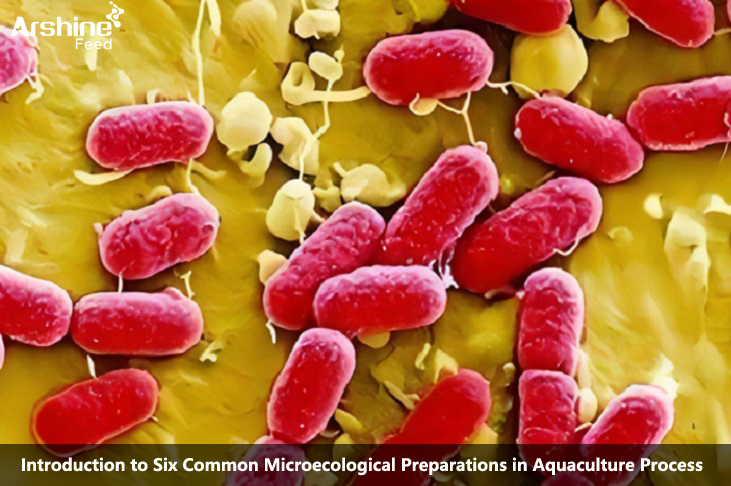

As the scale of aquaculture continues to expand, high-density farming practices and the monoculture of farmed species have led to an imbalance in the ecological environment, resulting in frequent outbreaks of various diseases. Moreover, the long-term and extensive use of antibiotics and other chemical drugs has not only caused some pathogens to develop resistance but also disrupted the normal microbial flora in the digestive tract of aquatic animals, leading to immune suppression. The accumulation of antibiotics in aquatic animals also poses a potential threat to human health. Therefore, the aquaculture industry must pursue sustainable development.
Microecological agents are beneficial microbial strains selected from the natural environment and cultured to create active bacterial preparations. Broadly speaking, microecological agents include bacteria, fungi, algae, and their metabolic products, which can improve the microecological balance of both the animal's gut environment and the aquatic environment. They enhance the animal's immune defense, inhibit the growth of pathogenic bacteria, and are considered biological agents. Internationally, microecological agents have been classified into three types: probiotics, prebiotics, and synbiotics. China's Ministry of Agriculture's Announcement No. 318 on the "Catalog of Feed Additives" lists 15 types of permissible microorganisms: Bacillus licheniformis, Bacillus subtilis, Bifidobacterium bifidum, Enterococcus faecium, Enterococcus faecalis, Lactococcus lactis, Lactobacillus acidophilus, Lactobacillus casei, Lactobacillus lactis, Lactobacillus plantarum, Pediococcus acidilactici, Pediococcus pentosaceus, Candida utilis, Saccharomyces cerevisiae, and Rhodopseudomonas palustris. The following are some common types used in aquaculture:
Photosynthetic Bacteria Photosynthetic bacteria are a physiologically diverse group of primarily aquatic bacteria. Their cells can be spherical, rod-shaped, curved, or spiral. All photosynthetic bacteria contain bacteriochlorophyll and carotenoids. They are rich in nutrients, containing up to 60% protein, coenzyme Q, vitamin B, folic acid, and other components that can enhance the immune system of farmed animals, promote growth, and increase economic benefits. Photosynthetic bacteria also improve water quality by increasing dissolved oxygen, reducing ammonia nitrogen concentration, and resulting in a yellow-green water color, thereby boosting productivity.
Bacillus Bacillus species are Gram-positive bacteria with rod-shaped bodies, most of which are motile and produce spores. Some species can produce peptide antibiotics. These characteristics make Bacillus useful as probiotics for human utilization. In aquaculture, Bacillus effectively reduces nitrogen and phosphorus concentrations, increases dissolved oxygen, and improves yield, resulting in favorable economic and environmental benefits.
Nitrifying Bacteria Nitrifying bacteria are chemolithoautotrophic organisms with diverse cell morphologies, non-sporulating, and Gram-negative. They can oxidize ammonia and nitrite into nitrate, forming absorbable nutrients that reduce turbidity and nitrite levels in the water, creating a healthier farming environment. Research has shown that tilapia ponds treated with a concentration of nitrifying bacteria at 100 CFU/L had reduced ammonia and nitrite levels, improved water quality, and increased fish body weight.
Yeast Yeast contains rich proteins and vitamins and has been widely used as an excellent additive in aquaculture feed. Some yeast species also have the ability to reduce ammonia nitrogen in water and purify water quality, such as Candida utilis.
Oligosaccharides Oligosaccharides are a type of prebiotic commonly used in aquaculture. Functional oligosaccharides cannot be directly absorbed by the host but can selectively proliferate beneficial microorganisms, such as Bifidobacterium and Lactobacillus, while inhibiting harmful bacteria and enhancing immune function. Japanese studies have shown that adding oligosaccharides to Bifidobacterium live preparations improved their effectiveness by 10 to 100 times compared to the control.
Antimicrobial Peptides Antimicrobial peptides are polypeptides with antimicrobial activity and have broad-spectrum bactericidal properties, making them promising for aquaculture applications. Studies have found that adding antimicrobial proteins to feed improved the growth rate, weight gain, survival rate, and disease resistance of Pacific white shrimp.
Add: Block 14, No.100, Luyun Road,Changsha 410205,China.
Mobile: +86 18874001228
Email: info@arshinefeed.com
WhatsApp: 8618874001228
WeChat: weiyuyan91